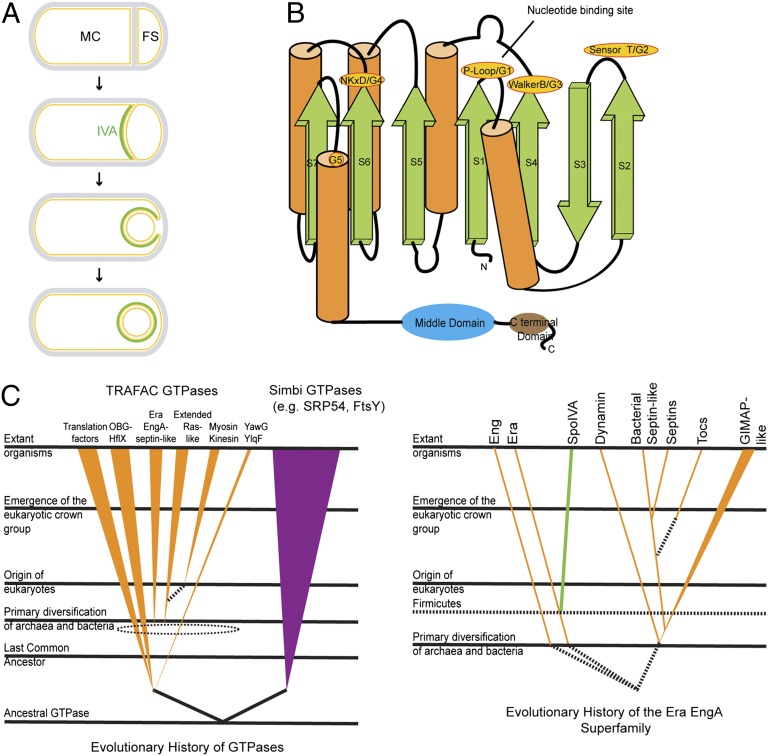Fig. 1.
ATPase IVA belongs to the TRAFAC class of P-loop GTPases. (A) Schematic representation of sporulation in B. subtilis. Asymmetrical division results in a larger mother cell (MC) and a smaller forespore (FS) that are held together by a cell wall that surrounds the sporulating cell (gray). Membranes are depicted in yellow. At the onset of engulfment, IVA (green) localizes to the engulfing membrane [anchored to the membrane surface by SpoVM (not depicted for clarity)] and tracks the engulfing membrane until it eventually surrounds the forespore (Bottom). (B) Topological representation of IVA. The active site motifs are labeled in yellow, whose numbering (G1–G5) corresponds to the “idealized” GTPase (37). The “middle domain” and the C-terminal domain are shown as cartoons (blue and brown, respectively). The colors of the strands, helices, and domains correspond to colors in Fig. S1. (C) Evolutionary history of GTPase families and the Era/EngA superfamily. Several relative temporal epochs separated by the major evolutionary transitions that mark their boundaries are shown. The filled colored lines and triangles indicate the maximum depth to which the GTPase lineages can be traced with respect to these temporal epochs. The broken lines indicate uncertainty in terms of the exact point of origin of a lineage. The broken-line ellipses bundle groups of lineages from within which a new lineage potentially could have emerged.

